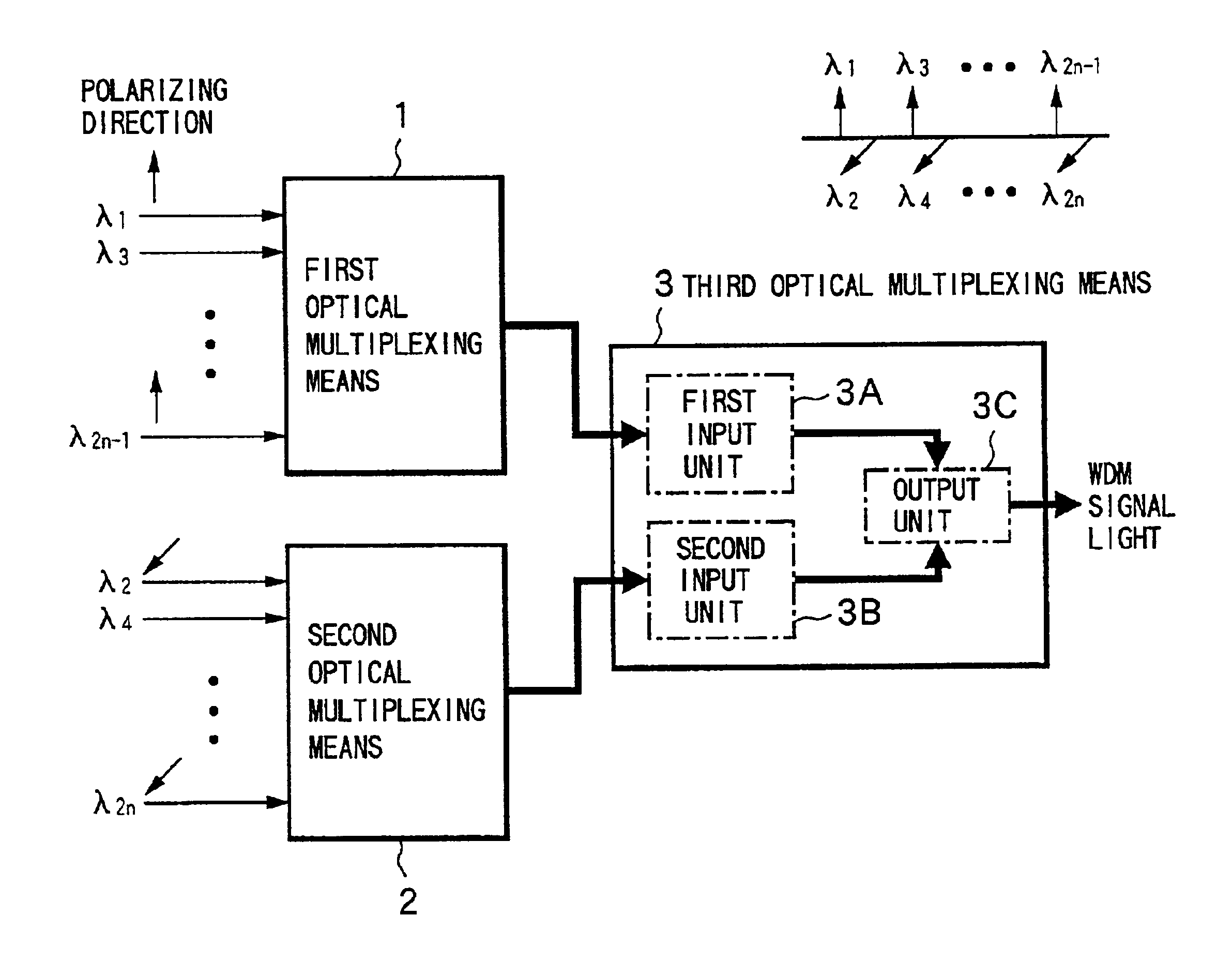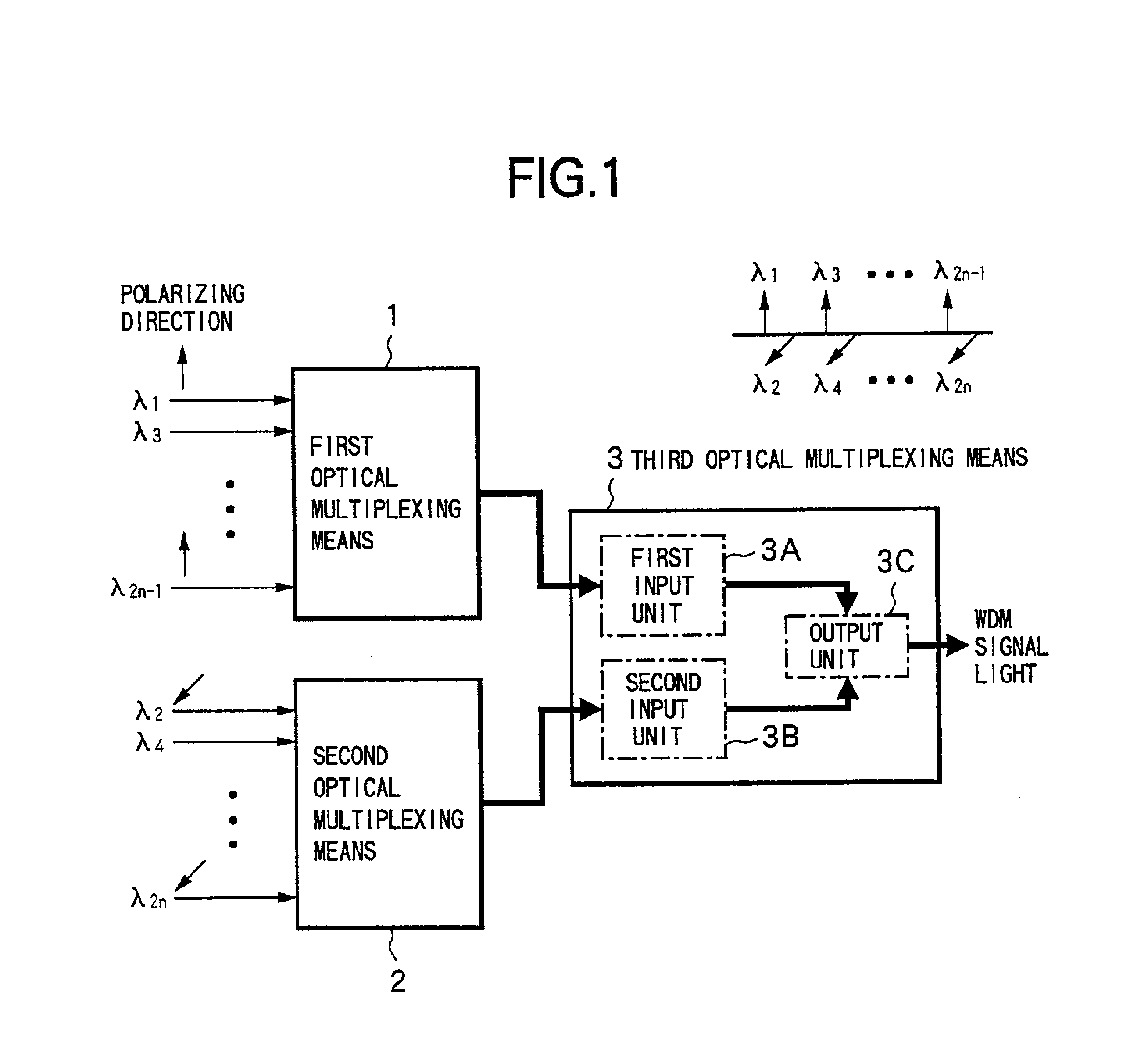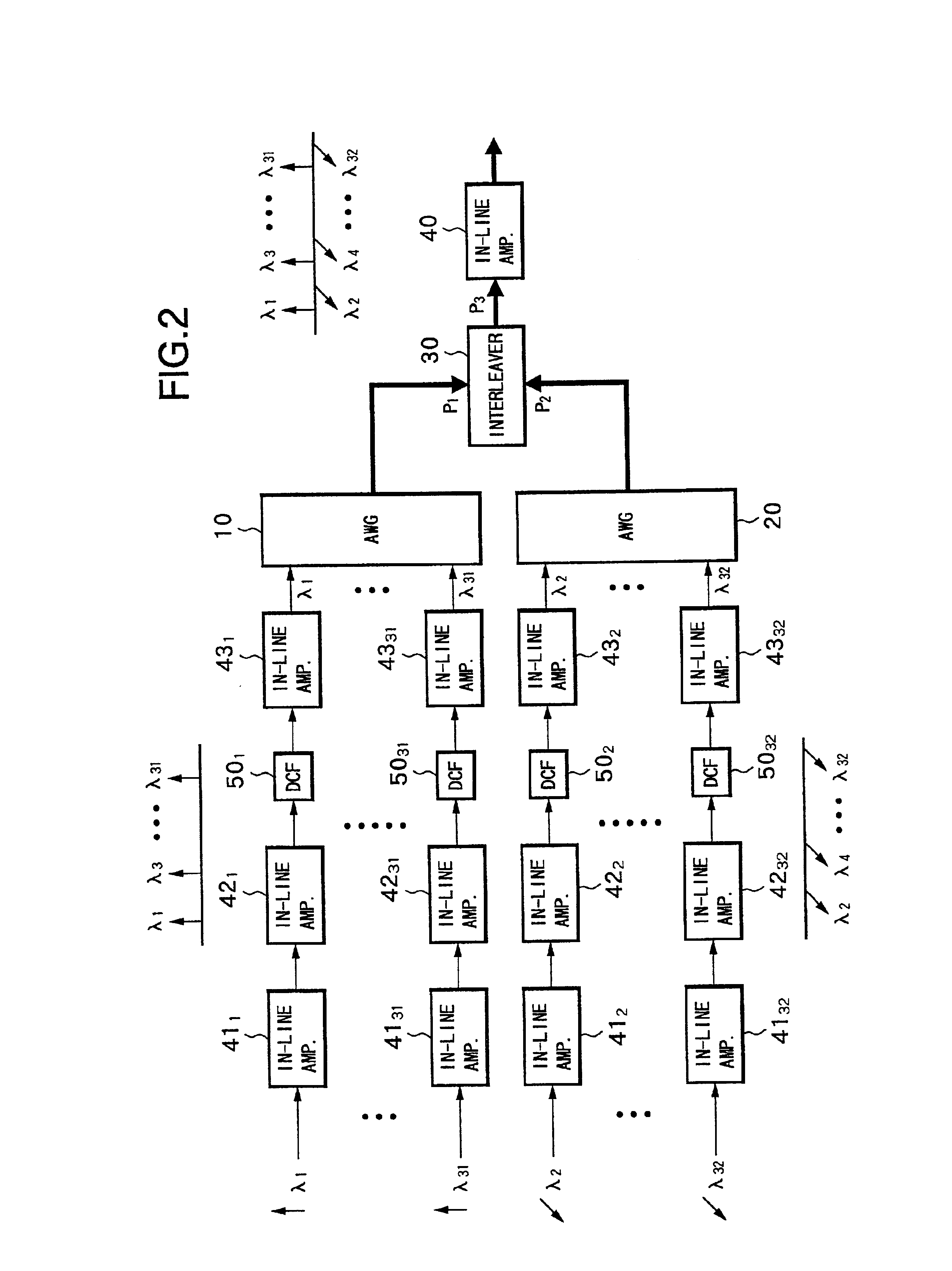Optical multiplexing apparatus and optical multiplexing method
a technology of optical multiplexing and optical signal, applied in multiplex communication, electromagnetic repeaters, instruments, etc., can solve the problems of difficult multiplexing of optical signals, difficult to realize multiplexing when they are different in polarization states, and influence of nonlinear optical effect becomes a problem, etc., to achieve reliable multiplexing of a plurality of optical signals, suppressing nonlinear optical effect and crosstalk, and low cost
- Summary
- Abstract
- Description
- Claims
- Application Information
AI Technical Summary
Benefits of technology
Problems solved by technology
Method used
Image
Examples
Embodiment Construction
[0035]An embodiment of the invention will now be described with reference to the drawings.
[0036]FIG. 2 is a diagram showing a constitution of an optical multiplexing apparatus according to the embodiment of the present invention.
[0037]In FIG. 2, the present optical multiplexing apparatus includes: in-line amplifiers 411 to 4132, 421 to 4232 and 431 to 4332 of a three-stage constitution for amplifying incident optical signals of a plurality of wavelengths (here, 32 waves are presumed, and their wavelengths are denoted by λ1 to λ32) for each of the wavelengths; dispersion compensation fibers (hereinafter referred to as DCFs) 501 to 5032 connected, respectively, between the in-line amplifiers 421 to 4232 of the second stage and the in-line amplifiers 431 to 4332 of the third stage; an array waveguide grating (AWG) 10 as a first optical multiplexing means 1 for multiplexing optical signals output from the in-line amplifiers 431, - - - , 4331 corresponding to wavelengths of odd numbers λ...
PUM
 Login to View More
Login to View More Abstract
Description
Claims
Application Information
 Login to View More
Login to View More - R&D
- Intellectual Property
- Life Sciences
- Materials
- Tech Scout
- Unparalleled Data Quality
- Higher Quality Content
- 60% Fewer Hallucinations
Browse by: Latest US Patents, China's latest patents, Technical Efficacy Thesaurus, Application Domain, Technology Topic, Popular Technical Reports.
© 2025 PatSnap. All rights reserved.Legal|Privacy policy|Modern Slavery Act Transparency Statement|Sitemap|About US| Contact US: help@patsnap.com



